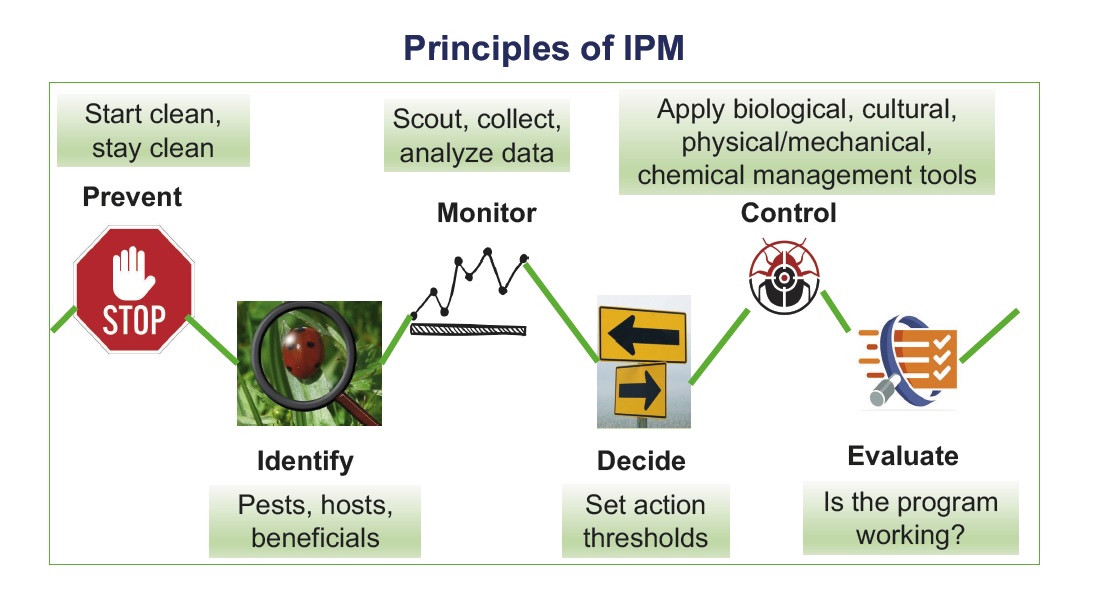Some Ideas on Pestwise You Need To Know
Some Ideas on Pestwise You Need To Know
Blog Article
Getting The Pestwise To Work
Table of Contents5 Simple Techniques For PestwiseTop Guidelines Of PestwiseOur Pestwise PDFsIndicators on Pestwise You Should KnowThe Basic Principles Of Pestwise The Best Strategy To Use For PestwiseThe Facts About Pestwise Uncovered

Q. Specify "incorporated insect management" (IPM) and checklist several feasible control techniques that may be made use of in an IPM method. A. Integrated insect management is the incorporating of ideal bug control strategies into a single strategy to minimize bugs and their damage to an acceptable level. Insect control strategies might include: host resistance, organic control, cultural control, mechanical control, sanitation, and chemical (chemical) control.
Excitement About Pestwise
What can you do to keep the bugs you are trying to manage from becoming immune to the pesticides you utilize? A. Insect resistance can be lowered by making use of incorporated pest monitoring and rotating the kinds of pesticides used.
Parasites are a critical hazard to the farming business, and integrated insect administration aids farmers address and mitigate these risks. Integrated insect administration uses numerous approaches in complex, thus being a more effective option to the problem. Wasp Nest Removal. Specifically, eliminating aggressive chemical methods allows for lessening damage to people and the environment by using natural and much safer alternatives rather
Things about Pestwise
The goal of incorporated parasite administration is to lessen this damage and control appropriate infestation levels instead than eliminate all unwanted populaces. This is why it is essential to comprehend what procedures are justified in each case and use aggressive ones only when various other integrated management methods don't work. Integrated monitoring mitigates the adverse effects of a non-IPM strategy, and the major advantages of IPM Advantages of IPM.
A correct understanding of the infestation scope figures out if the issue ought to be addressed. are the following elements of an IPM program because it is essential to recognize if the microorganisms make possible risks and choose the integrated administration choices or the particular pesticide use. plan to decrease problems by applying different agronomic strategies.
Pestwise for Beginners
if avoidance was ineffective. Integrated administration options in an IPM program begin with safer to extra hostile ones. For instance, target or broadcast chemical spraying might comply with hands-on elimination or trapping that hasn't aided. Those integrated management aspects assist comprehend just how to intend and implement an IPM program step by action: Display your plants consistently.

Among others, IPM social techniques consist of the complying with field monitoring techniques: dirt therapy; choice of suitable plants; plant turning; interplanting or strip chopping; selection of planting days; weed control; usage of trap plants. Favorable soil problems speed up plant growth, and energetic plants are more resistant to problems. Healthy plants and seeds determine effective crop advancement, so it is vital to choose pest-free planting product with solid roots.
Therefore, amongst other applications, crop turning can be efficiently used as an integrated pest monitoring technique. Pests spread out slower if rows of various crop kinds divide their host plants in intercropping or strip chopping, which is also used in the integrated parasite administration system. Conversely, invasions raise when plants of the same crop kind or family members expand together.
Potato beetles can damage expanding potatoes, as well as tomatoes. Planting trap plants in patches is one more alternative for IPM intercropping. This incorporated pest management technique recommends attracting bugs to particular plants and after that regulating them with chemical or mechanical techniques. Particularly, you can grow soybeans as trap crops for Japanese beetles.
7 Easy Facts About Pestwise Shown
Obstacles are common instances of physical IPM techniques. Fully grown bugs or their eggs and larvae are collected by hand and ruined.

Division of Plant Sciences. College of Missouri. Soil solarization is a reliable incorporated management strategy to sanitize the area by warming it in an all-natural way. This incorporated management method suggests an usual way of ruining pests by predators, parasitoids, microorganisms, and various other biological control agents (aka hostile microorganisms). The role of biological control in IPM is to.
The 7-Second Trick For Pestwise
With time, their population became click a real annoyance to farmers along with aboriginal kangaroos or dingoes. The cane toad is another case showing integrated organic control failing in this respect when it declined to search the target varieties and came to be a pest itself. Parasitoids develop on or within their hosts to ultimately eliminate them after developing.
Report this page